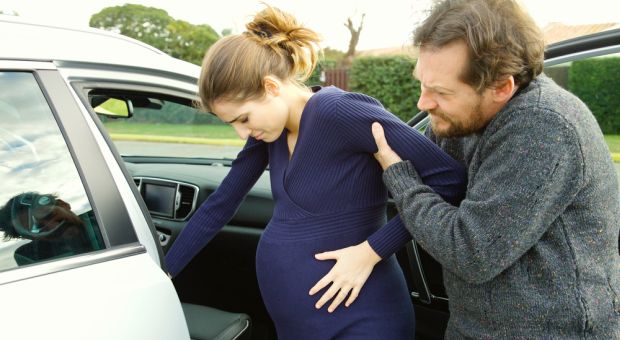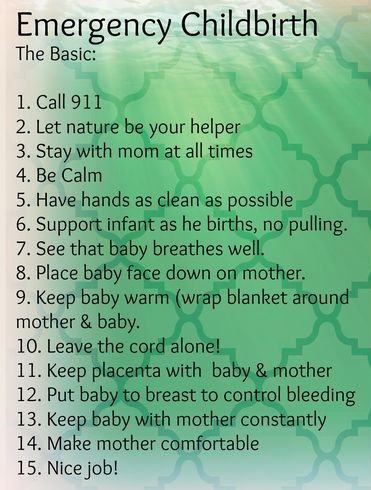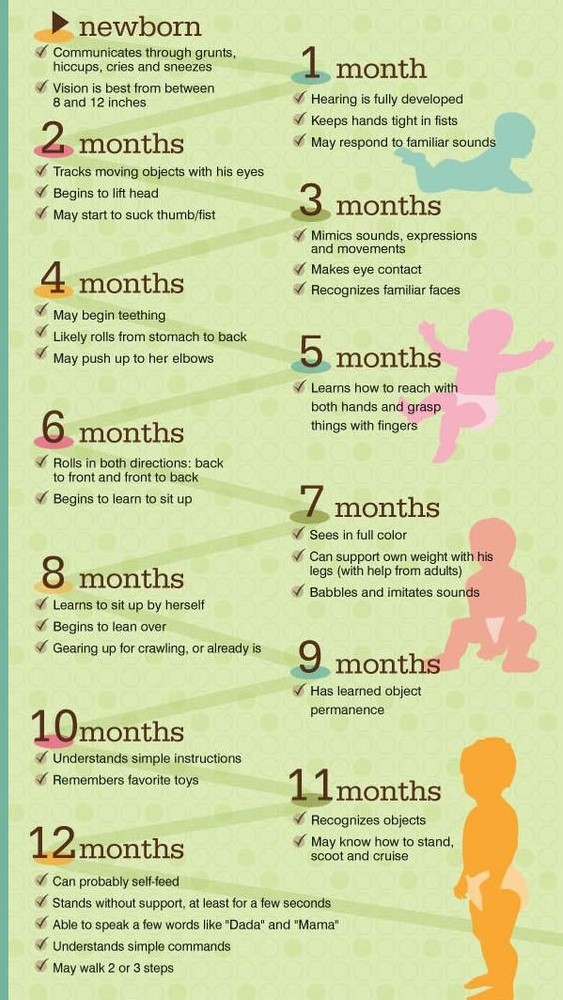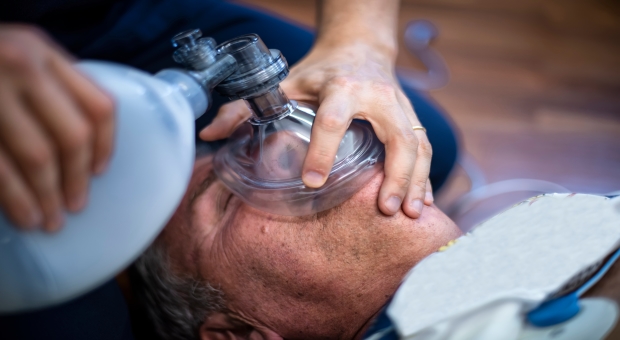When the words “emergency childbirth” come to mind, you may think of old television shows where mom is in labor in the bathroom while her older child is coached with step-by-step childbirth instructions by a 911 operator.
While these scenarios do happen, they are few and far between.
Either way, if you are an expectant mother, the possibility of this happening to you has probably crossed your mind. First of all, as a mother who has given birth to 4 children naturally, let me tell you that the likelihood of an emergency childbirth situation happening to you is very low. Second, let me assure you that should childbirth happen this quickly, it’s usually indicative of everything going well (unless the baby is not at full term).
If you’re already in the pushing stage of labor, and trying to decide whether to jump in the car and frantically speed to the hospital or birthing center, versus delivering the baby at home, the safest choice is to stay home. (especially, if you, the mother are at home without another adult! Please don’t make the foolish decision to try driving while in labor!)
The dangerous possibilities of being killed or injured in an accident, especially while speeding, vastly outweighs any possible danger of a medically unattended childbirth. Also, you are running the risk of your baby being born in the car before you arrive at your destination. Even with another adult, the accompanying person will be driving and won’t be able to assist with the childbirth.
Women planning to deliver at a hospital or birthing center often fear rapid, sudden labor or rush hour traffic preventing them from reaching their destination on time. Women planning to give birth at home often fear that their midwife or husband won’t arrive in time to assist. Regardless of where you choose to give birth, talk to your doctor or midwife about your fears. They are familiar with these concerns and will give you a few easy to follow instructions that will help calm your nerves in the unlikely event that this happens
What to Do In an Emergency Childbirth Situation
Medical professionals are trained through instructions that read more as a guidelines of what not to do. This is because natural childbirth is an extremely normal event; a woman’s body instinctively knows what to do.
First, don’t panic.
Remain calm so you can focus on the birth, even if you are giving birth alone.
If you are able, call 911, and your doctor or midwife. If you are driving, safely pull over and turn on your hazard lights. Do not speed. Do not attempt to continue driving. You’re much safer giving birth in the car while it’s completely stopped!
If you are attending the birth, gently remind the mother to pant, or to only push gently with each contraction.
When you begin to see the baby’s head, gently place your hand on the head to give it support. Remind the mother to continue to pant during this stage to help avoid tearing. If you’re giving birth alone, simply place your hands over your baby’s head as best as you can.
Never pull on your baby’s head or their body! Let your body and baby do the work. Your body will gently guide your baby out. Use caution. Babies are slippery!
When the full head of the baby is out, stroke gently downward on the nose to help expel excess mucus and the amniotic fluid.
After baby is fully delivered, lay baby on mom’s bare skin, with baby’s head positioned slightly lower than its body (to continue draining mucus and fluid). Cover both mom and baby with clean, dry towels or blankets.
DO NOT cut the cord. Baby can safely stay attached to the umbilical cord indefinitely. Medical personnel will arrive with proper clamps and the sterile equipment needed for this. However, if you absolutely must cut the umbilical cord, first, dip scissors thoroughly in rubbing alcohol. DO NOT attempt to cut the umbilical cord without clamping it or tying it close to the baby first.
Clean, new dental floss or a soft piece of sterilized string can be used to tie the cord. Never pull on the cord.
Normally, mom can push a couple more times to safely expel the placenta. DO NOT attempt to pull on the umbilical cord to remove the placenta. Sometimes it helps for mom to get up and squat or sit on the toilet to help deliver the placenta. Once the placenta is delivered, place it in a bowl or other sterile container and save it for medical attendants to examine. If it doesn’t come out, wait for medical help to arrive and assist.
Mom should either massage her own uterus, or let an attending person help do this for her. Mom’s uterus should be considerably smaller once baby is born. The uterus should feel like a hard lump inside of her abdomen. If the placenta is still not out, massaging the uterus may help it to expel. It the placenta has delivered, uterus massage will help minimize bleeding. After the placenta is delivered, mom’s uterus should reduce to approximately the size of a grapefruit.
Keep mom and baby comfortable and safe until medical help arrives, or until you can reach the chosen birthing center or hospital.
What if baby is breech?
If delivery begins and a leg, foot, or bottom appears instead of baby’s head, or if the umbilical cord begins to come out first, home delivery should not be attempted. Mom should instead get into “knee-to-chest” position (kneeling on her knees with the upper part of her body scrunched down — to lower the likelihood of a pinched umbilical cord) and get to the hospital as fast as possible. The baby has to continue receiving oxygen through the umbilical cord until baby is born and breathing on their own. With breech presentation or umbilical cord prolapse, baby’s health or life could be in danger. Breech births and cord prolapse situations require immediate medical attention and a possible cesarean section delivery.
In prolapse or breech situations, baby has a better chance of survival when another person gently pushes against baby by holding baby back. With cord prolapse this keeps the baby’s head or other presenting body part weight off the umbilical cord so blood will continue to flow through it. With breech presentation, this keeps baby from being delivered without medical attention.
If a breech birth is happening so fast that baby cannot be held back, mom should attempt to push baby out as quickly as she can. Instruct mom to stand up or squat, so gravity will help baby be born quicker. If baby is still not coming out quick enough, the attending person should reach inside mom’s vagina, find baby’s mouth, and make an available air passageway so baby can begin to breathe. It is also sometimes helpful for the attending person to apply firm downward pressure on mom’s uterus to help get baby out.
As soon as baby is delivered to where the cord is attached, you have about 5 minutes to completely get baby out safely. Do not tightly grasp or pull hard on baby as this causes more damage than breech birth.
While the thought of attending a breech delivery sounds frightening, remember that the likelihood of this happening is very low. 98-99% of babies present at birth, head down. Breech presentation is usually discovered during routine prenatal care and birthing attendants usually make arrangements for mother to be in the hospital plenty of time before delivery. Also a presenting leg, foot,or bottom is not as firm as a head. Therefore, breech babies typically require longer, slower labors than head down babies, giving the mom plenty of time to get to the hospital.
When you call 911, you need to give them plenty of information to help you. They will want to know how far along the pregnancy is, your location, and what you are witnessing. If you have someone with you, or you’re physically able to reach the door, unlock it. The emergency dispatcher on the phone will most likely remain on the line with you to help talk you through the birthing process if baby winds up being delivered prior to the arrival of emergency assistance.
In his book Emergency Birth, Dr. Gregory White, says, “When in doubt, do nothing.” This is the best advice available. Remember to remain calm and do what needs to be done to stay safe.









charlene gardner | March 24, 2019
|
u are talking about when the shit hits the fan, well there be no, one to call or a hospital to go to . so now what . u need a better out come then calling for some one who will not come. no mid wifes or any thing else. we need a compleat note on what to due, when there isn’t no, one to come and help.
William Glass | March 24, 2019
|
If you are in New York or Virginia , the first thing to do is ask the mother if she wants to keep the baby. In those two states, you have the option to kill it if the mother doesn’t want it.
Jerry D Young | March 24, 2019
|
My thoughts on dealing with pregnancy, birth, and post-birth situations from a prepper perspective.
While this does not really address the feeding of newborns and infants, other than stating that I believe Nestle’s line of Nido baby formula and infant growth formulas are good products. This is from extensive research and not direct observation. However, the company does make a couple of products that I do use, namely their full-fat powdered milk for LTS (Long Term Storage), though it does not store as long as non-fat it does store long enough that I think fresh milk will be available by the time it reaches the non-usable point.
The lists are primarily to address pregnancy through the infant stage of having children, when any part of it, or the entire time might be under adverse conditions due to a variety of reasons.
The lists do not really cover problem pregnancies, problem births, and at-risk newborns and infants. It is pretty much for basic, few-problems situations. For anyone with a family history of problem pregnancies, difficult births, and newborn and infant survival difficulties, much more due diligence research should be done, with the help and cooperation of pediatricians, pediatric nurses, midwives, and other medical professionals whose specialties include these subjects. Follow their advice and instructions.
And, of course, the standard disclaimer. I am not a doctor of any kind, have never played one on TV or in the movies, and did not stay at a Holiday Inn Express last night. So, you must do your own due diligence research, and make your decisions based on your knowledge, skills, and the needs of yourself and your family. Do not take anything in this article as medical advice. Everything is simply my opinion, as always, and a starting point for people to do their own research.
The following two sections of this article are from my Home Only-Aid Kit list:
Part # 6: Pregnancy, Birthing & Infant Care Kit
Pre-pregnancy/pregnancy use items
• Contraceptives
• Pregnancy home testing kits
• Pregnancy vitamins & nutrition supplements
• Morning sickness bags (barf bags)
• Maternity clothing in several sizes
Natural childbirth manuals
• Emergency Childbirth By Gregory J. White Md
• Special Delivery By Rahima Baldwin
• Spiritual Midwifery By Ina May Gaskin
• Ina May’s Guide To Childbirth By Ina May Gaskin
• Birth Emergency Skills Training: A Manuel For Out Of Hospital Midwifes By Bonnie Grueberg
• Childbirth At Home By Marion Sousa
• Heart & Hands By Elizabeth Davis
• A Book For Midwives (Hesperian Foundation)
• Wise Woman Herbal Childbearing By Susan S Weed
Birthing/delivery aids (reusable items):
• Comfort support pillows
• Blanket
• Towels
• Washcloth
• Small sponge
• Folding basin
• Knee/leg/foot supports to help position and hold legs in proper position for easiest birth in lieu of a birthing table/bed
• Fetal stethoscope
• Regular stethoscope
• BP cuff
• Stop watch
• Dilation measurement comparison scale
• Fetal heart monitor if possible
• Bed pan in case labor is extended
• Stress/pain relief aids (things to hold or grip, straps that can be held and pulled when straining, mouth/teeth protector for clenching teeth, misting water bottle for cooling, drinking water in easy to drink container w/straw)
• Stainless steel placenta receiving/inspection bowl
• Baby length measuring ruler
• Collapsing baby weight scale
• Baby footprint/handprint inking pad & roller
• Birth record documents
• Mother’s after birth vanity toiletries (comb, brush, mirror, bobby pins, pony tail ties/ribbons/ scrunchy, face cleansing cream/moisturizer, etc.)
• Some type/form of robe or closing in case original clothing is dirty, soiled, or damaged
Birthing kit (single use – have several)
• Large square of plastic or large plastic bag
• Blanket
• Small individual antiseptic soap
• Dilation measurement comparison scale
• 10 cleansing towellettes
• Mouth/teeth protector for clenched teeth
• 1 pencil/pen
• 4 adhesive tape id strips
• 1 patient delivery gown
• 2 attendant delivery gowns
• 5 surgical masks
• 5 pairs of surgical gloves
• 1 36″ x 36″ receiving blanket
• 2 newborn diapers
• 1 sanitary napkin support belt
• 4 wrapped sanitary napkins
• 1 sterilized scissors/ scalpel/ razor blade (for cutting umbilical cord)
• 1 pair episiotomy scissors (if episiotomy procedure is needed)
• 4 sterilized umbilical tie tapes or sterile umbilical cord clamps (1 1/2″ from belly, only after cord stops pulsing, thins, and goes from bluish to white)
• 4 sterilized cotton balls
• 1 sterilized eye, nose & throat clearing syringe
• 1 bottle sterile eye wash
• 4 sterilized diaper safety pins
• 1 3″ gauze roll bandage
• 6 4″ gauze compresses
• Chux/underpads (to lay out instruments and supplies)
• Placenta receiving/inspection bowl (inexpensive plastic okay for disposable kits and can be kit container)
• 4 small trash bags (for placenta disposal, double bagged, mother/ father/ family may want special handling and disposal)
• Handprint/footprint ink cleaning towelettes
• Birth record documents
• Mother’s after birth vanity toiletries kit
(The sterilized items to be carried in a sterilized package)
(Complete package carried in the square of plastic or plastic bag)
Useful herbals for before, during, & after childbirth:
• Shepherds purse (for hemorrhage)
• Motherwort
• Black and blue cohosh
Infant care items:
• Baby bag
• Diapers (disposable in all sizes)
• Diapers, fabric, conventional
• Diapers, fabric, easy care
• Diaper safety pins (and alternative diaper closures)
• Rubber pants (lots of them unless going diaperless)
• Feeding aids (nursing bras, privacy cover, breast cleaning items, clean-up items, burp towels, leakage pads, trash bags, etc.)
• Bottles & nipples, conventional (Kleen Kanteen stainless steel)
• Bottles & nipples, disposables
• Electric/battery breast pump & parts, including additional power
• Manual breast pump & parts
• Breast milk storage bottles
• Milk/ formula refrigeration means (electric/ non-electric)
• Formula, Nido brand formula mix & distilled water or milk & additives
• Infant vitamins & supplements
• Feeding sling (and other feeding aids)
• Manual baby food grinder/processor (some regular food processors do not get food fine enough, and blenders usually require liquids to work)
• Baby wipes
• Baby powder
• Baby oil
• Diaper rash ointment
• Teething rings, teething pain relief medicines (Oragel, Hyland’s teething tablets)
• Pedialyte for dehydration – available in powder form
• Infant Motrin, Tylenol, infant cold medicine
• Blankets, onesies, head coverings
• Pacifiers (multiple types and several of them)
• Thermometer (forehead or anal)
• Safety seat/carrier (several sizes)
• Stroller/ baby carriage (with good protective features for sun, wind, rain, cold)
• Baby carry pack, front carry
• Baby carry pack, rear carry
• Baby carry pack/wrap, side/hip carry
• Pacifier, bottle, toy, etc. tethers so when the baby throws something, it will not be lost, and often will not even get dirty
• A set of cleaning items to include baby wipes, misting spray bottle, towels, etc.
Part # 7: Pediatric Specific Kit
• Insulated storage container
• Ailment explanation/indication dolls & diagrams
• Distracting/occupying toys & games
• Good behavior rewards
• Children’s fever thermometers
• Non-sting first-aid ointment
• Bandaids (children’s decorated versions)
• Smaller tongue depressors
• Smaller finger splints
• Dosage measuring dispensers
• Decorative/festive paper cups
• Plastic spoons
• Smaller ear & nose syringes
• Extra syrup of ipecac (check with your doctor. This has fallen out of favor.)
• Toothache ointment
• Children’s eye wash bottle w/extra bottles of wash
• Children’s eye drops
• Children’s ear wash
• Children’s ear drops
• Children’s nasal spray
• Children’s lip balm
• Children’s pain killer
• Children’s laxative
• Children’s diarrhea medication
• Children’s antacid
• Children’s cough medicine
• Children’s cold remedy
• Safety seat/carrier
• (plus any additional children’s specific disease/ailment requirements needed on a regular or semi-regular basis by any member of the family)
The following list was developed for in-general situations. However, with the stresses a pregnant woman will have during times of disaster, especially one known to be long-term, or one in which there is a great deal of speculation and uncertainty, having some of the items on this list will aid in maintaining a more stress-free atmosphere.
Feminine needs for long term disasters
• PStyle/Go-Girl/Lady J female urine diverter for outdoor use if indoor access is limited
• Hygiene needs: Packaged/ reusable sanitary napkins/ Diva Cup/ natural sponges/ cleansing wipes/ etc.
• UTI products: Pyridium/ powdered cranberry juice or pills/ apple cider vinegar/ Acidophilus pills (for women before taking antibiotics that could cause yeast infections)
• Miconazole (for yeast infections)
• Advil/ Midol/ Pamprin/ Ibuprofen/ acetaminophen
• Separate bucket/chemical toilet if not using conventional toilets (To avoid having to use the usually much messier men’s facilities.)
• 4x the toilet paper allotment used for general planning
• Privacy means (curtains/ enclosures/ screens/ etc.)/ personal space/ personal closet or dresser
• Sweats/loose clothing, large robes, large towels, various sizes plain underwear, sports bras
• Pregnancy prevention supplies
• Baby care supplies
• Expedient shower methods: sun shower bags/ MSR bag shower/ pressure sprayer/ campers propane shower/ large body bath wipes
• Body care products: razors/ deodorant/ hand lotion/ face lotion/ body lotion
• Facial products: baby wipes (no fragrance/ hypo-allergenic/ for sensitive skin)/ Pre-moistened facial cleansers
• Hair care products: Non-lathering soap/ shampoo/ dry shampoo/ baby powder/ bentonite clay/ brushes/ combs/ tie backs/ scrunchies/ hair bands/ bandannas/ baseball caps, etc.
• Lip care products: Chapstick, Lip balm, lipstick(s), etc.
• Nail care products: clippers/ nail files /emery boards/ sealer & polish/ etc.
• Multiple hot water bottles
• Any medical necessities for allergies, prescriptions, etc.
• Comfort items: Additional coffee/ chocolate in several forms/ salty snacks/ soothing teas (chamomile, lavender, peppermint, etc.)
• Anti-boredom materials: knitting/ crochet/ sewing/novels/ movies/ story teller/ sketching tools/ hobby items, etc.
• Strong reading lights and a variety of strengths of reading glasses
• Everything set up for easy cleaning/ rubber gloves/ aprons/long handled tools, etc.
Some Comfort Items For Babies, Infants, & Children
Babies:
• Diaper rash ointment
• Baby powder
• Pacifiers
• Teething rings, teething pain relief medicines (Oragel, Hyland’s teething tablets)
• Pedialyte for dehydration – available in powder form
• Infant Motrin, Tylenol, infant cold medicine
Children:
• Stuffed animal
• Small lightweight toys
• Playing cards or travel games
• Crayons, coloring book
• Puzzle book, crosswords, word finds
• Favorite book
• Baseball or Nerf football
• Harmonica
• Ipod or small device for playing games or music
• Hard candy, bubble gum
• Learning to read books
Just my opinions.
joe | March 24, 2019
|
Once the head starts to emerge feel around the neck to make sure the cord is not wrap[ed around the neck, if it is, get a finger beneath it and pull it over the head ,check that there is not still some of the cord around the neck, when all is released, or if none is present, then and only then let the mother push to get the entire head out.
Get a good book on Midwife home delivery of baby, going by what is here can end up with a dead baby.
Dennis | March 24, 2019
|
After some additional research, when my wife delivered our 3rd child, we had the baby quickly wiped off, and put to breast while the cord was still attached. The nursing baby triggered the placenta to release, which it did, and it was delivered effortlessly within a few minutes. The doctors and nurses were astounded. They told us that they had to go through all sorts of maneuvers from massaging to shoving fists into the mothers belly to force the placenta out., and had not witnessed this before. This was in a county hospital in the East San Francisco Bay Area. They even brought in a group of 4-5 doctors & interns to see the amazing event. I want to recommend all mommy’s use this technique before cutting the cord. It worked for us.
Shannon | March 25, 2019
|
There is some information that is lacking like how to know if baby is breathing well, how to stimulate baby to breathe, how to suction with a bulb syringe to open the airway if they are not breathing, etc.
It also does not address what to do in the event of post-partum hemorrhage or what the signs/risks of that are.
A lot of good info here too!
We often forget that a lot of moms and babies died in delivery or shortly thereafter without trained people and supplies around.
Clergylady | March 26, 2019
|
My last child was a bottom first face down breach delivery. Cord three times around her neck. No way to get to a hospital. Dr had talked us through a normal delivery and we had a picnic basket packed with necessities including new white shoe laces with hard tips cut off. Those and 4 flannel receiving blankets were washed in hot water with bleach then machine dried and each put in a zip lock bag. Nothing to prepare for a dangerous hard delivery. This was a 4th child so there was basic knowledge and experience.
We put a new shower curtain on the bed and covered it with a clean sheet and I lay on it. I fought the urge to push so delivery went smooth but took longer. I couldn’t actually push her out when I couldn’t hold back any longer so my husband gripped her hips as best he could and gently pulled to bring the hips down to the point of delivery. They he quickly unwrapped the cord from her neck and held her body up so her face was facing out to breath but the head was in place to keep the bones open rather than letting them close on her neck. With the next push the head was delivered and he laid her on my belly. I wrapped her in one of the clean blankets and started nursing. A neighbor who was an RN showed up at the door just then. She used the bulb syring we had to make sure the nose and mouth were clear of mucus and fluids. Then using olive oil and cotton balls she cleaned the baby. The cord was collapsing by then so she carefully “milked the cord of remaining blood by sliding pinched fingers Toward the baby. Then she tied the cord with the shoelaces. First tie near baby. Second tie a few inches away from the first knot. Only then did she cut the cord. Very soon after that the placenta was delivered. She massaged my belly till the uterus firmed up. Then while still nursing the baby she cleaned me up. We also had the prescription eye salve used in a deliveryroom on the newborns eyes.
The next day we went to my Drs office and he declared us both in fine shape. If I’d been able to get to a hospital they would have reached inside to unwrap the cord from her neck and try to turn her. Or she would have been delivered cesarean.
A book on the subject of delivery and complications would be good to have. My husband had handled the situation so well that the Dr tried to get him to sign up to be a midwife. He was able to describe what he was seeing. That way I was able to help talk him through the delivery. Calm was life saving. If he’d panicked a wrong action may have resulted. Or I might have panicked. You can’t stay on top of the pain if you panick. His calm really helped me. He’d never delivered an animal or seen a movie with a delivery. I was blessed that it all worked out ok. A movie could have really helped.